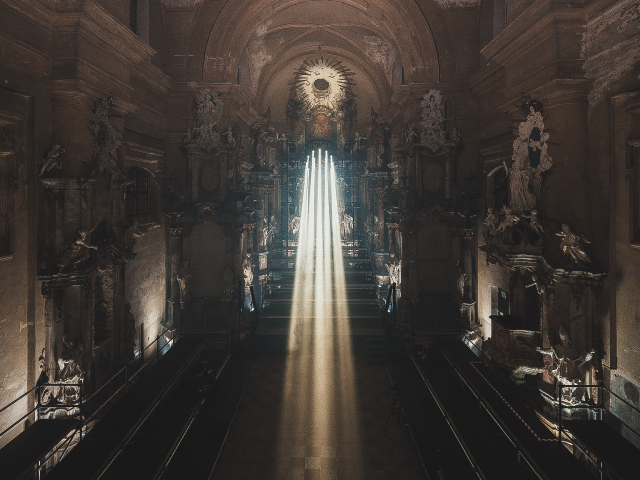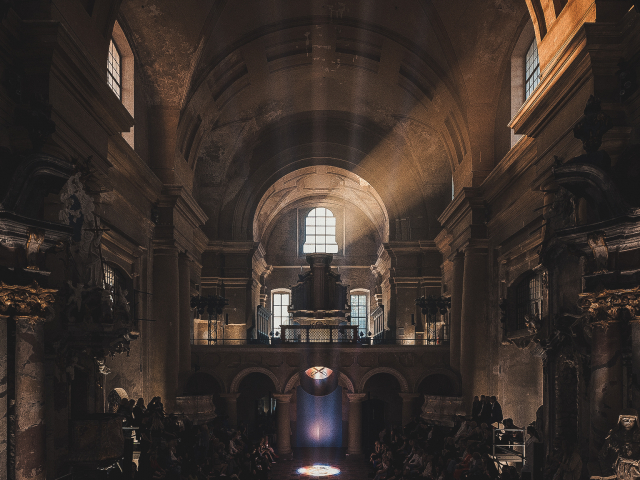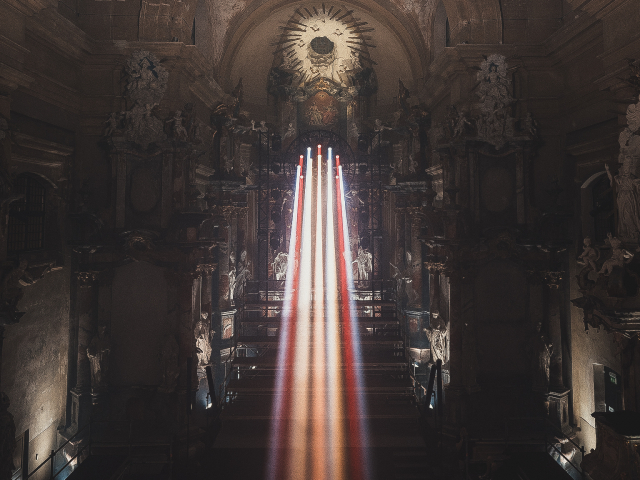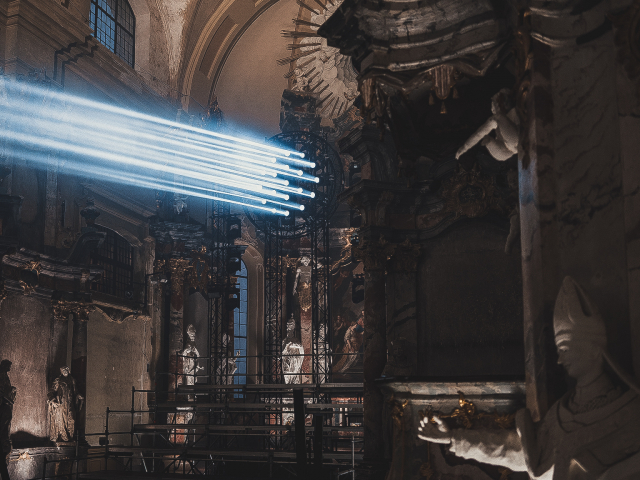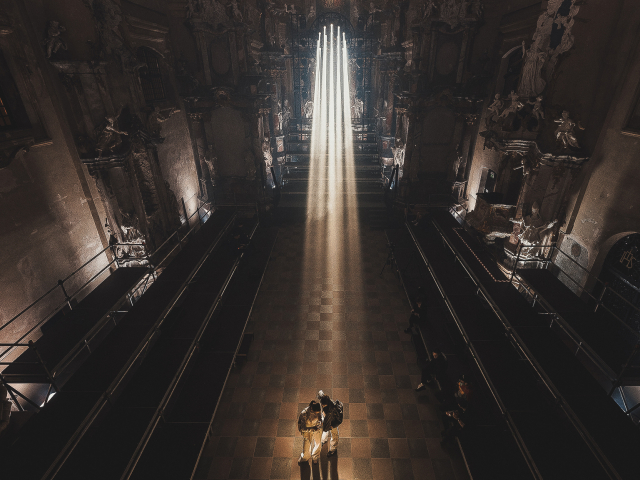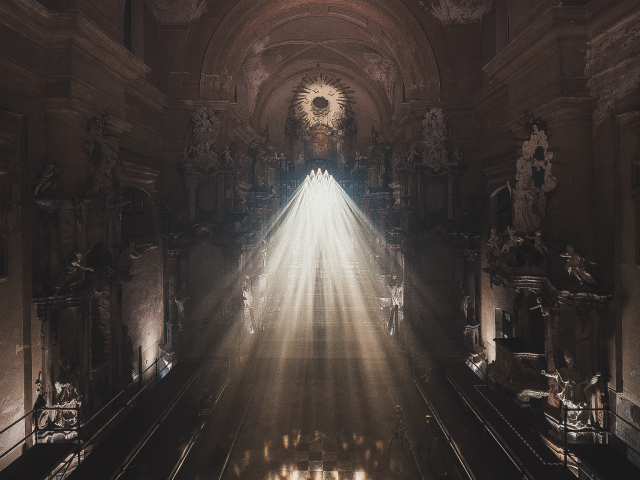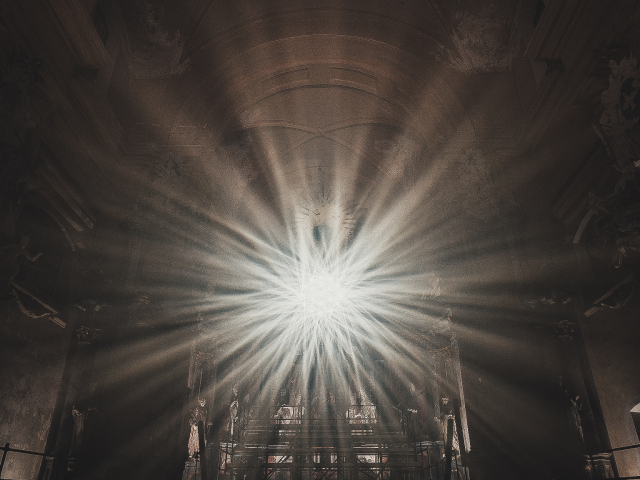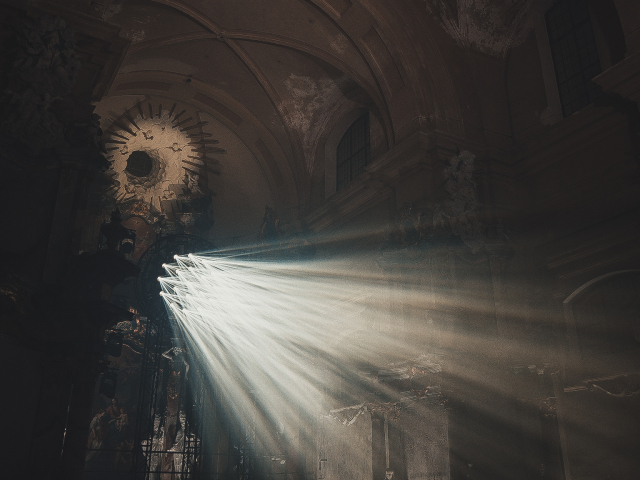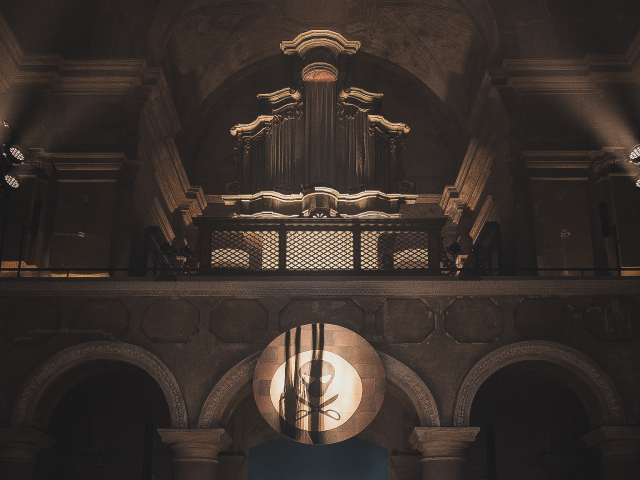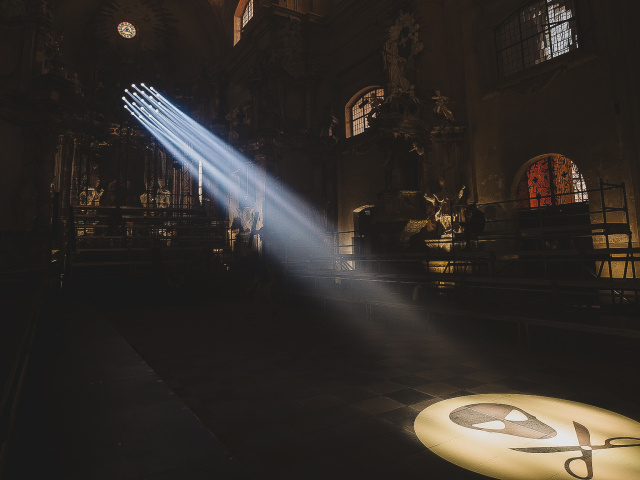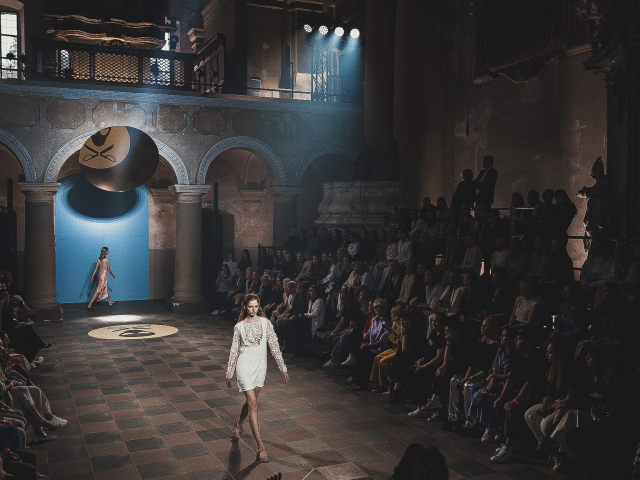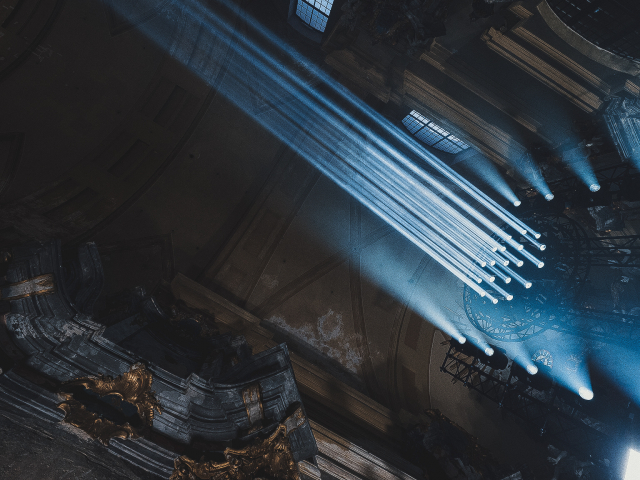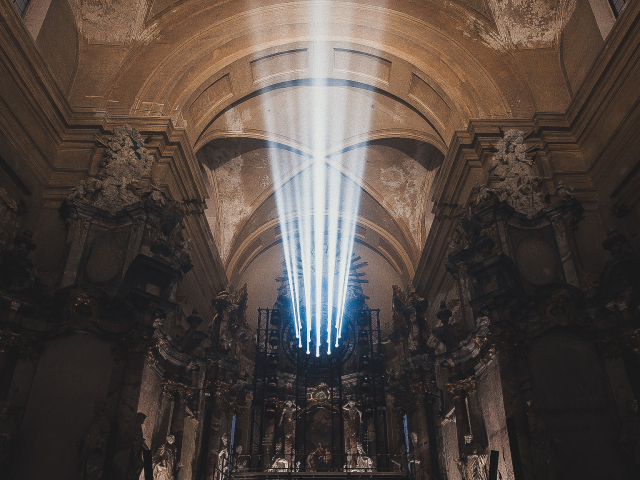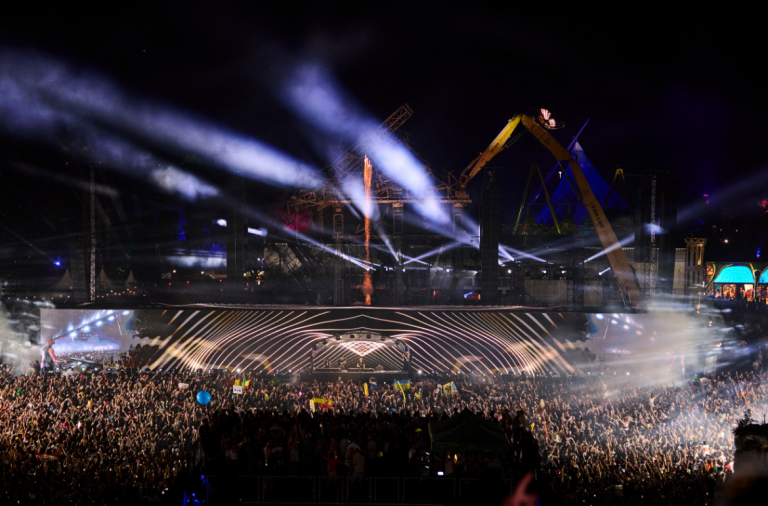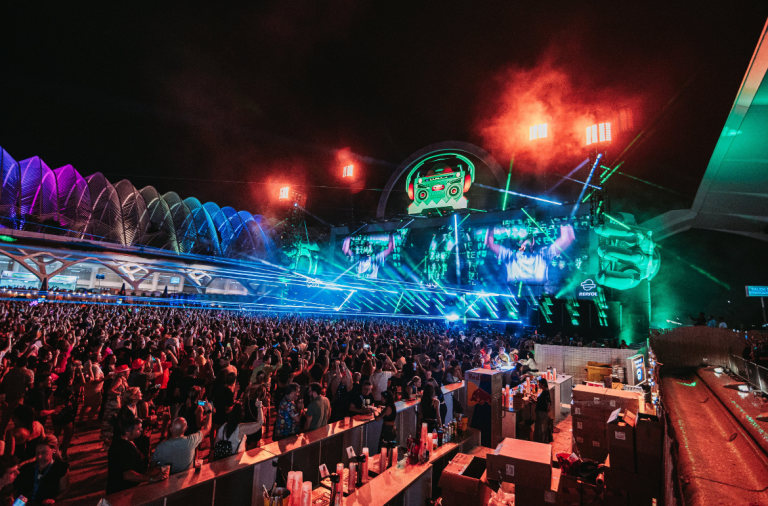In interview: Andrius Stasiulis on the lighting design of the Fashion Infection runway show
Each year, the Fashion Infection festival in Lithuania brings together rising fashion design talents and experienced professionals to provide them with an internationally recognized runway platform for their fashion collections. In 2024, the festival took place for the first time in St. Catherine’s Church in Vilnius. At the request of the superordinate event production company Baltic Production Service, Andrius Stasiulis (Marfa Lights) created a unique lighting design with striking elements that perfectly complemented both the historic church architecture and the progressive fashion language. In this interview, Andrius, who has also attracted attention in recent years with spectacular opera productions and award shows, talks about his lighting concept and the qualities of his favorite Cameo lighting fixtures.
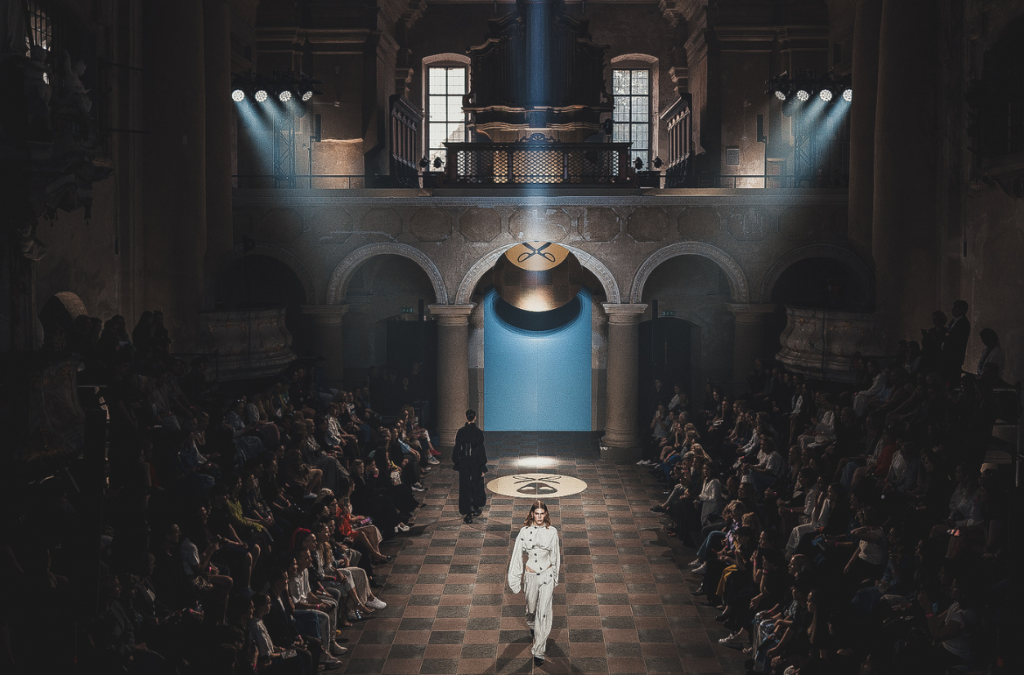
Andrius, please tell us something about Fashion Infection: How did you get involved? What excited you about this project?
Andrius Stasiulis: We have been collaborating with the Fashion Infection team since 2021, and for the 2024 edition, we were tasked to design the lighting. We were excited by the unique challenge of transforming St. Catherine’s Church, a centuries-old venue, into a dynamic, modern space for the runway. The opportunity to blend the historical beauty of the church with bold, immersive lighting and create a cohesive experience was particularly inspiring for us.
How did you approach the lighting design? What creative ideas did you come up with and what were the client’s requirements?
The client wanted the event to feel bold and modern, yet still in harmony with the venue’s historic character. To achieve this, we utilized both natural light that filled the church during the day and custom lighting setups that highlighted the baroque features while enhancing the collections displayed on the runway.
The lighting design for this project was inspired by the interplay of light through stained glass, reminiscent of how sunlight filters through the colorful windows of a church. As light streamed through the simulated stained glass, it illuminated the entire catwalk, creating a mesmerizing visual effect. A key element from the church’s existing stained glass was emphasized and transformed into the main design feature. The concept was inspired by the iconic rose window, with its intricate patterns serving as the foundation for the lighting scheme.
Soft, ambient lighting accentuated the church’s textures and ornate details, while bolder, more dramatic lighting was focused on the runway, ensuring that the fashion pieces remained the focal point. The result was a dynamic fusion of light, fashion, and architecture, with each element enhanced without overshadowing the others.
©AHOY Joana Suslavičiūtė
How does the lighting of models on the runway differ from a typical stage situation? How does this influence your choice of lighting fixtures?
As already mentioned, the lighting of models on the runway must accentuate the garments and details without overshadowing them. This requires precise lighting that enhances the overall presentation, often influencing the choice of fixtures to be more delicate and focused compared to traditional stage lighting. For this project, we selected Cameo Opus X Profile fixtures, known for their high brightness, excellent beam quality, color mixing capabilities, and high CRI. These features made them the perfect choice to illuminate the runway with clarity and precision.
While shadows can sometimes add an interesting dimension and contrast to lighting design, in this case, we needed to avoid them to ensure that every detail of the fashion pieces was clearly visible. The goal was to balance the lighting carefully to prevent harsh shadows, which could obscure the garments, while still delivering a clean and vibrant presentation. The Cameo Opus X Profile fixtures allowed us to achieve this balance, ensuring that the light enhanced the models and garments without compromising visibility or creating unwanted contrast.
How did you bring together the church location with your lighting design? How do you manage to unite a historic architectural language with modern lighting to create a coherent look?
Andrius Stasiulis: St. Catherine’s Church, with its baroque architecture, was a stunning backdrop, and the goal was to enhance, not compete with, its beauty. To achieve this, we strove to use desaturated, more pastel colors, which naturally fit the church’s interior. We utilized natural light where possible, especially during the day, allowing the venue’s original details to shine in their natural state. This was then augmented with strategically placed artificial lighting that highlighted specific features of the church, such as its arches, columns, and intricate moldings.
The key was to create a coherent look where the lighting felt like a natural extension of the space rather than an imposed element. By carefully controlling the intensity and positioning of the lights, we were able to seamlessly blend the old and new, celebrating the church’s history while enhancing the contemporary feel of the runway show.
©AHOY Joana Suslavičiūtė
Why did you decide to use the Cameo OPUS X Profile? What do you particularly like about it?
Andrius Stasiulis: The OPUS X Profile provides the perfect balance of brightness and control, making it powerful enough to perform well even in daylight conditions. Its smooth light field and even beam coverage ensure consistent illumination, which is essential for highlighting the architectural details of the space. Additionally, it operates quietly, which is important in environments like St. Catherine’s Church, where the ambiance needs to remain undisturbed. The Opus X Profile also offers excellent color mixing and dimming capabilities, allowing us to precisely control the lighting atmosphere and seamlessly create the desired effects.
In the pictures you can see a circular arrangement of moving lights that looks like a ‘second sun’. What is it all about?
Andrius Stasiulis: The circular arrangement of moving lights, resembling a “second sun” or “moon,” was carefully designed to adapt to both the collection and the church’s interior. Cooler tones were chosen to complement the fashion collection, creating a contemporary feel, while warmer tones blended seamlessly with the church’s historic architecture, enhancing its natural ambiance. This dynamic lighting feature created a striking focal point for the runway show, evoking natural light and giving the space an immersive atmosphere. The moving lights added visual interest and fluidity to the show, ensuring that both the space and the collection were showcased in harmony.
How went the programming of the show? Was it all timecode-controlled or was a lot of it performed live? How spontaneous do you have to be as an operator during a runway show?
Andrius Stasiulis: The programming of the show was primarily timecode-controlled. We received all the soundtracks in advance and programmed the lighting accordingly using Depence3. Once on site, the main task was to synchronize everything with the designers, ensuring that their vision was accurately reflected. Any spontaneous adjustments were based on feedback given by the designers during rehearsals, allowing for some flexibility in final tweaks. As an operator during a runway show, you need to be prepared for some level of spontaneity, especially when accommodating last-minute changes from the designers. However, most of the process was pre-programmed and smoothly executed with timecode.
Andrius, thank you very much for your time!
The following Cameo products were used for Fashion Infection 2024:
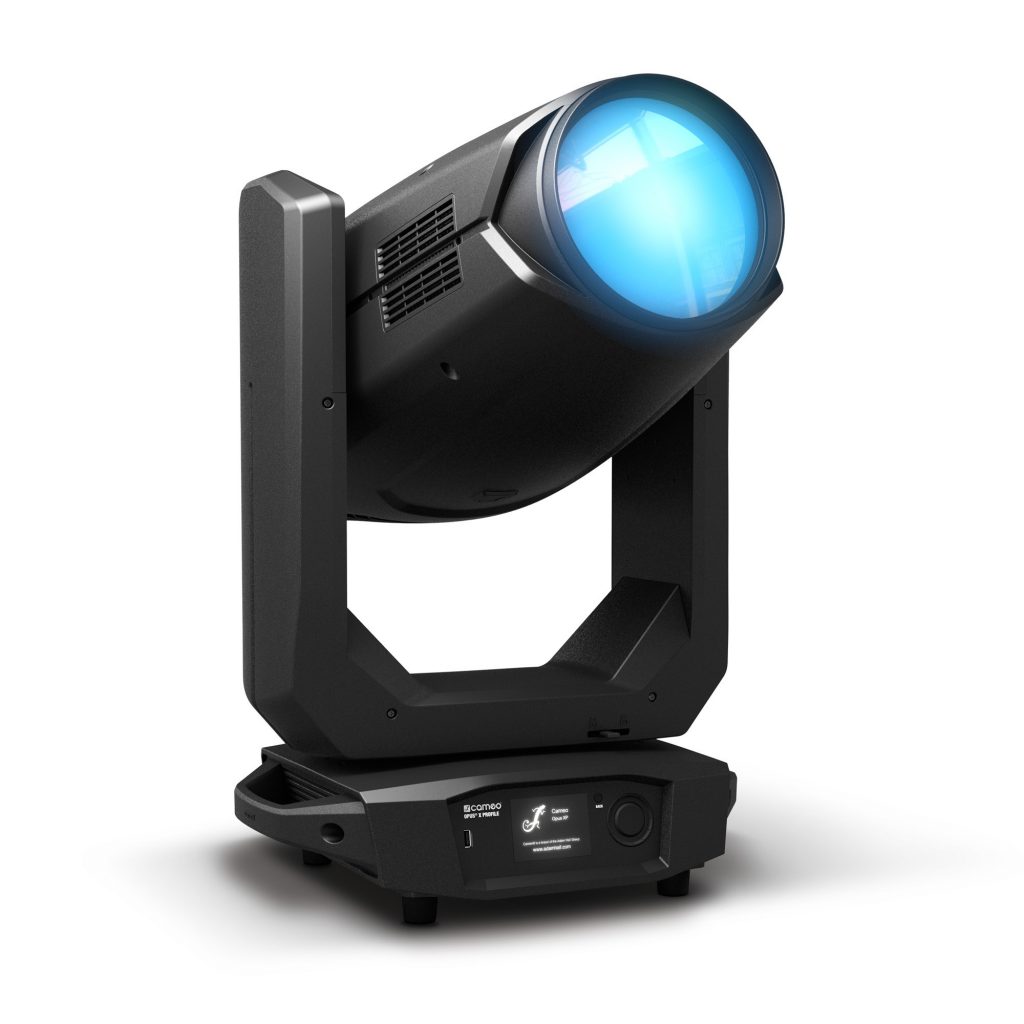
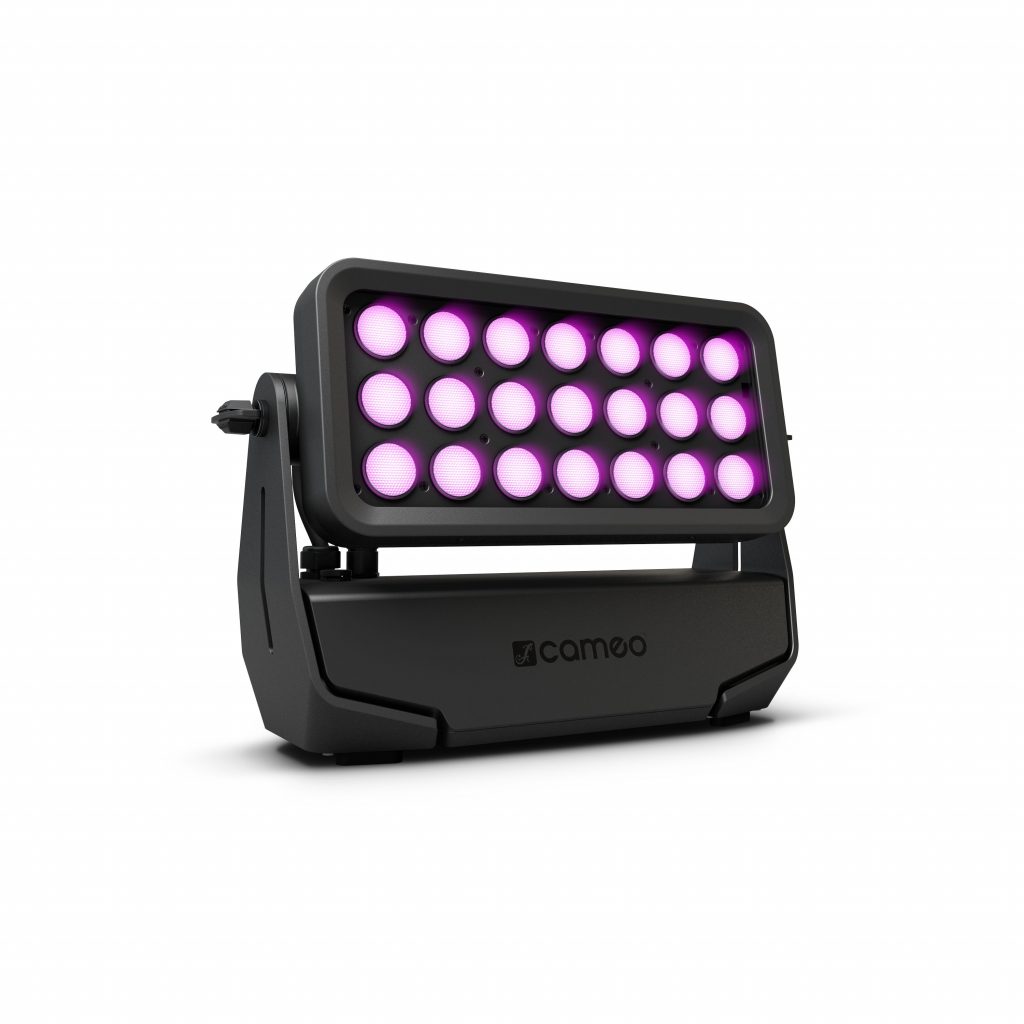
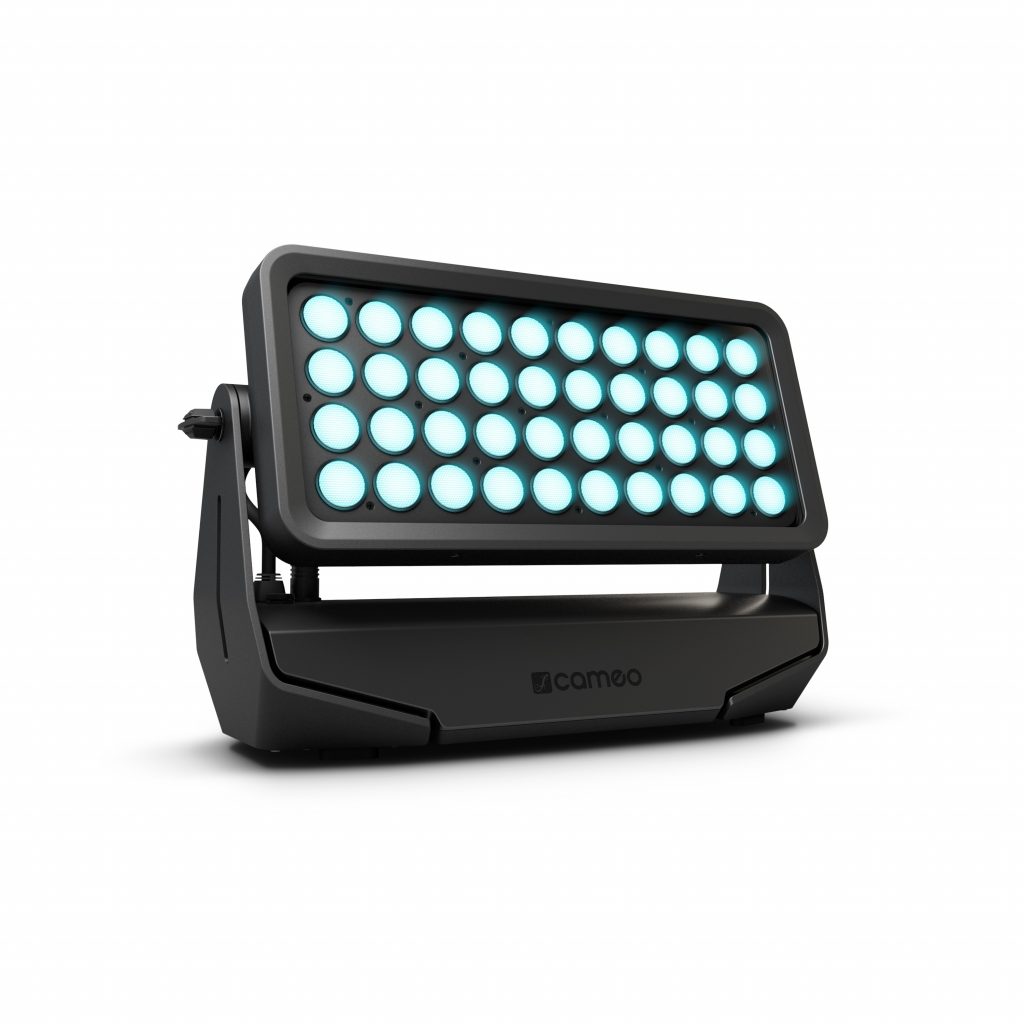
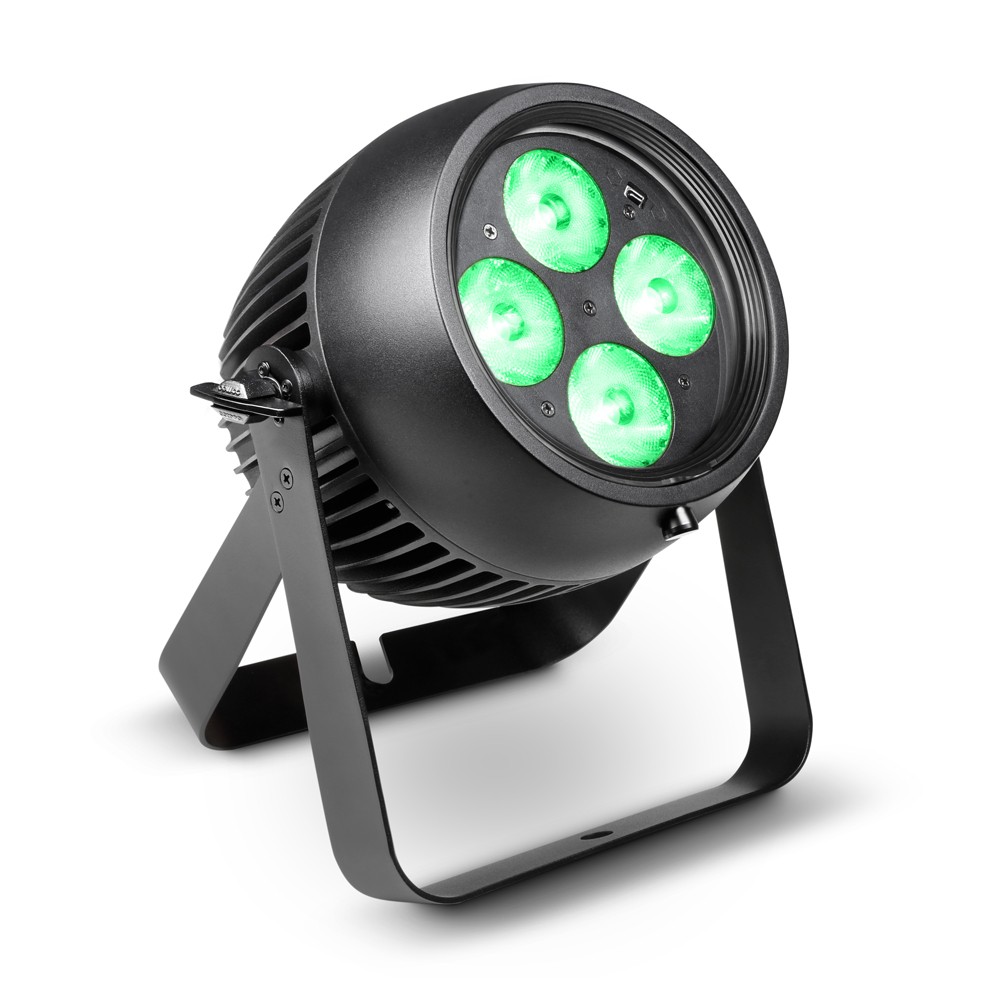
#Cameo #ForLumenBeings #EventTech #ExperienceEventTechnology
Further information:
madosinfekcija.lt
marfa-lights.com
bps.lt


